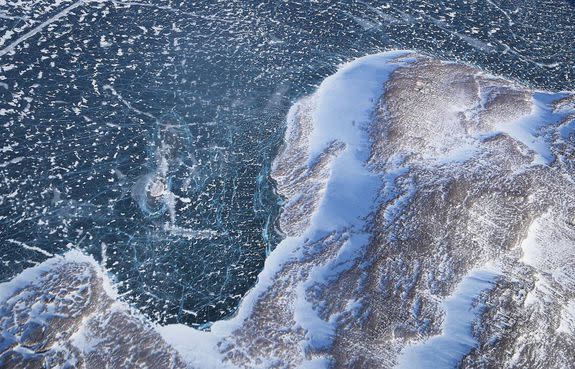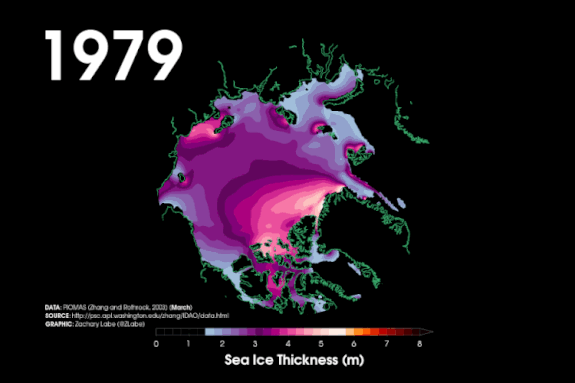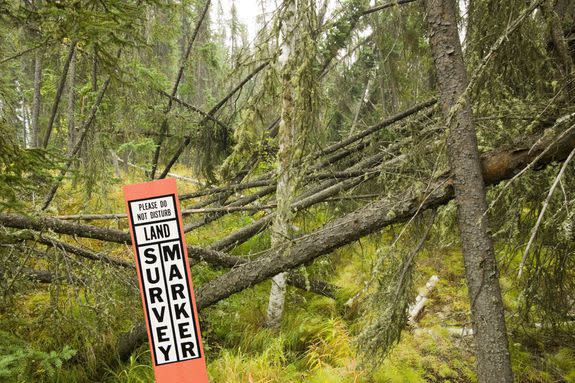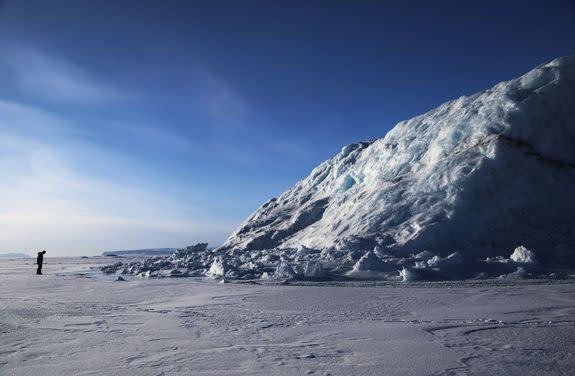What we do in the next 5 years will determine the fate of the melting Arctic

Global warming has pushed the Arctic into a new state unprecedented in human history, with thinning and retreating sea ice, skyrocketing air and sea temperatures, melting permafrost, and glaciers that are shedding ice at increasing rates.
All of these impacts and more may seem remote at first — after all, few of us live in Nunavut — but if you're a coastal resident anywhere in the world, from New York City to Dhaka, Bangladesh, what happens in the Arctic will affect you during the next several decades and beyond, primarily through sea level rise.
SEE ALSO: Trump White House reveals it's 'not familiar' with well-studied costs of global warming
The economic effects of all Arctic warming impacts may be enough to dent the gross domestic product of some countries, with cost estimates ranging from $7 trillion to $90 trillion by the end of this century.
These are the conclusions of a new, comprehensive assessment of the Arctic climate by a division of the Arctic Council — a cooperative, governing body that helps oversee development in the Far North.

Image: Mario Tama/Getty Images
The scientific report, released on Tuesday, is known as Snow, Water, Ice, and Permafrost in the Arctic, or SWIPA. About 90 scientists helped produce the report, while more than two-dozen experts peer-reviewed the results.
The document contains two key findings that anyone concerned about the future of not just the Arctic, but the entire globe, should take note of.
The first is that the Arctic Ocean could be free of summer sea ice starting as early as the late 2030s, which is earlier than other estimates have shown. The second is that rapid Arctic warming is driving greater melting of land ice in the region, which led scientists to conclude that consensus projections of global sea level rise made in 2013 are too conservative.
Compared to the previous SWIPA report, which was produced in 2011, the new assessment paints a far more dire picture of an Arctic climate in overdrive.
It also offers hope that action can be taken now to slow down and eventually stabilize Arctic warming after about the year 2050.
But time is running out.
Even with rapid action to curb global warming pollutants like carbon dioxide and methane, the Arctic most of us grew up with — featuring thick sea ice making the region virtually impenetrable year-round — is gone, and is not likely to return anytime in the next century.

Image: zack labe
"... The Arctic of today is different in many respects from the Arctic of the past century, or even the Arctic of 20 years ago," the report states. "Many of the changes underway are due to a simple fact: Ice, snow, and frozen ground — the components of the Arctic cryosphere — are sensitive to heat."
Based on computer model projections, the report states that average fall and winter temperatures in the Arctic will increase up to 5 degrees Celsius, or 9 degrees Fahrenheit, above late 20th century values by the middle of the century, even if relatively stringent greenhouse gas emissions cuts are made.
Such temperature thresholds are already being reached in some months, with January 2016 recording a temperature anomaly of 9 degrees Fahrenheit above the 1981-2010 average for the region, with even higher anomalies seen during October through February of the same year.
This past winter was the warmest on record for the Arctic, and for the third straight year, Arctic sea ice peaked at a record low level during the winter. This has left sea ice in a precariously thin and sparse state as the upcoming melt season nears.
The report contains valuable findings on what would happen to Arctic climate change if the world were to come close to meeting the goals set by the Paris Climate Agreement. That treaty, which went into force in November 2016, aims to keep global warming to well under 2 degrees Celsius, or 3.6 degrees Fahrenheit, above preindustrial levels through the year 2100.
It's unclear whether the agreement's goals are still feasible, considering that the U.S. — the world's second-largest emitter — is considering pulling out of it altogether, and other nations have yet to offer plans to cut their emissions in line with the temperature target.

Image: Warming Images/REX/Shutterstock
Meeting the Paris targets would help slow the pace and reduce the severity of Arctic warming, but it "would not stabilize the loss of Arctic glaciers, ice sheets, and ice caps," the report states.
"The recent SWIPA assessment tells that the changes in the Arctic are bound to continue at the current rate until mid-century," said Morten Skovgaard Olsen, who chaired the new report, in an email.
"But it also tells that immediate and ambitious green-house gas reductions will slow the speed of changes beyond mid-century and even stabilize change beyond mid century, preventing major further impacts associated with the Arctic melt.”
Any carbon pollution cuts made now will have the most significant influence on what the Arctic will look like after about 2050, the report's authors said at a press conference Tuesday in Virginia.
“The changes are cumulative, and so what we do in the next 5 years is really important on slowing down the changes that will happen in the next 30 or 40 years," said James Overland, a climate scientist with the National Oceanic and Atmospheric Administration.
"The emphasis on action and immediacy is one of the main findings” from the report, he said.

Image: mario tama/Getty Images
Foreign ministers from the eight Arctic nations will meet in Fairbanks, Alaska on May 11 to discuss these findings and other issues pertaining to the region. Some discussion on the Paris agreement may take place, particularly along the sidelines of the talks.
According to the SWIPA report, meltwater from Arctic glaciers has contributed 35 percent of current sea level rise, with the greatest contribution coming from Greenland.
The planet's largest island lost an average of 375 gigatons of ice per year. This is equivalent to losing a block of ice measuring 4.6 miles on all sides, from 2011 to 2014 alone. It amounts to twice the melt rate from 2003 to 2008.
In addition, thawing permafrost is harming infrastructure from Alaska to Siberia, with landslides and mysterious craters swallowing parts of the Russian Arctic.
In Alaska, the report found that wildfires in taiga forests are worse now than at any time in the past 10,000 years, due to hotter, drier summers and earlier spring snowmelt.
